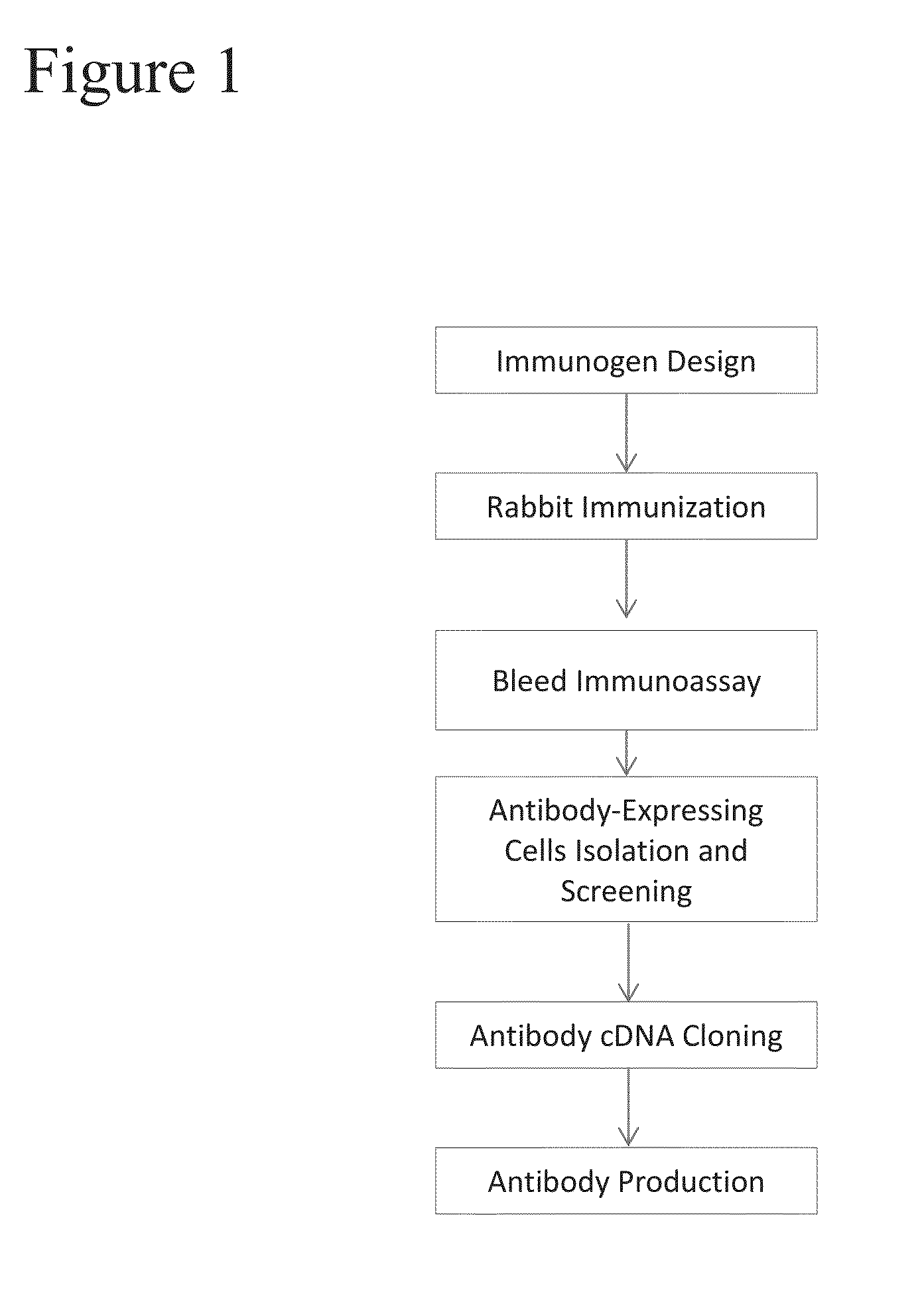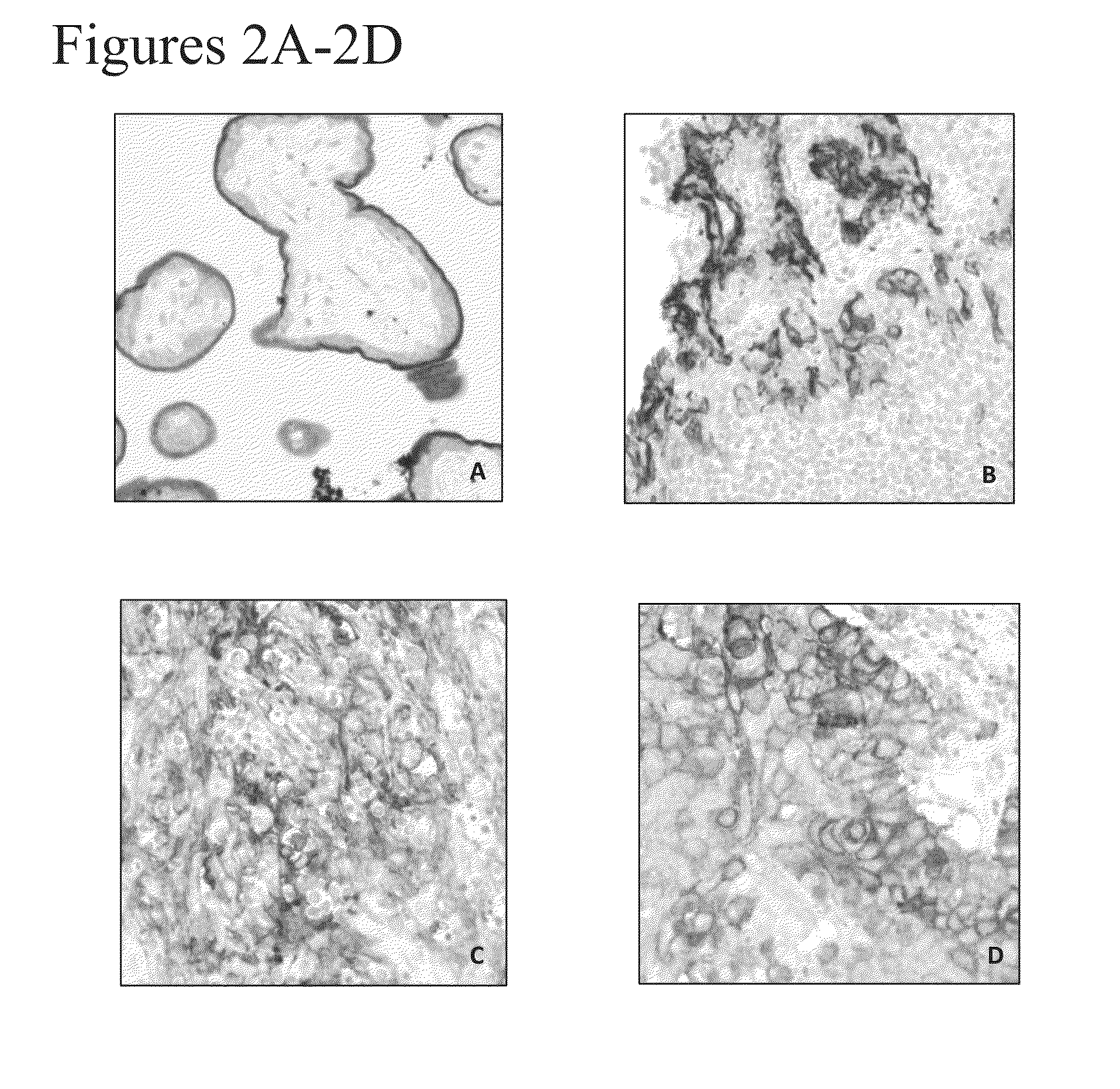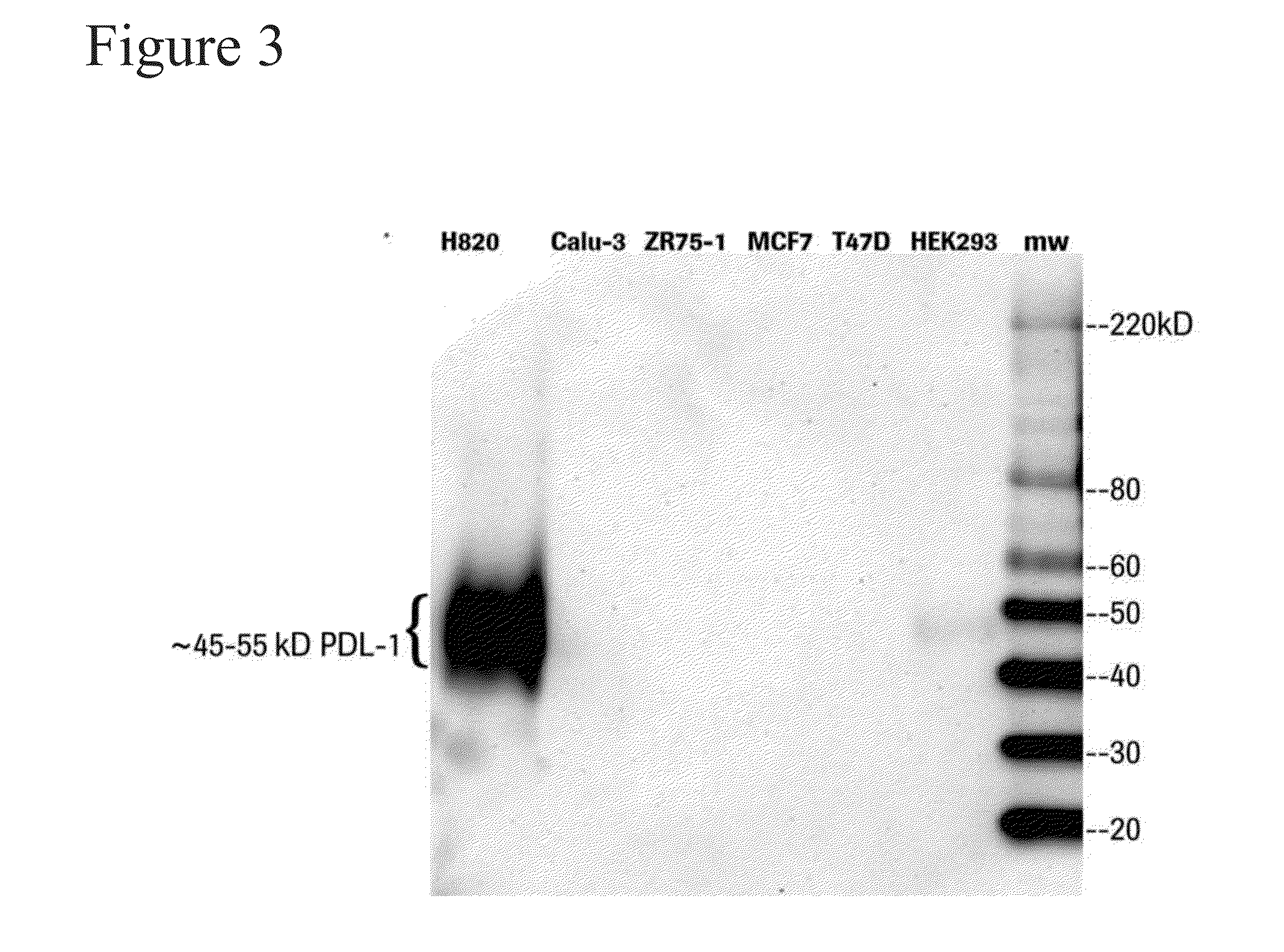PD-L1 Antibodies and Uses Thereof
a technology of pdl1 and antibodies, applied in the field of pdl1 antibodies, can solve the problems of unreliable diagnostic reagents, conflicting results, and challenging use of pdl1 protein expression as an accurate predictor of cancer
- Summary
- Abstract
- Description
- Claims
- Application Information
AI Technical Summary
Benefits of technology
Problems solved by technology
Method used
Image
Examples
example 1
Rabbit Monoclonal Antibody Generation
[0201]FIG. 1 illustrates the overall procedure used to create PD-L1 monoclonal antibodies using a rabbit host. The anti-PD-L1 rabbit monoclonal primary antibodies were directed against the sequence CGIQDTNSKKQSDTHLEET (SEQ ID NO: 1), which represents amino acid residues 272-290 of human PD-L1. Thus, the resulting antibodies would target the C-terminal cytoplasmic region of human PD-L1 much like the E1L3N® anti-PD-L1 antibody (Cell Signaling Technology, MA).
[0202]The 19-amino acid peptide was synthesized and covalently conjugated to a keyhole limpet haemocyanin (KLH) carrier protein. New Zealand white rabbits were immunized with KLH-conjugated peptide emulsified with complete Freund's adjuvant followed by a series of booster doses of immunogen emulsified with incomplete Freund's adjuvant. The rabbit that generated a IHC positive polyclonal antibody was selected for further monoclonal development. For IHC testing, standard OptiView DAB kit protocol...
example 2
Target Specificity of Anti-PD-L1 Antibodies
[0212]Rabbit anti-human PD-L1 monoclonal antibodies SP263, J45H2L4 and J27H6L4 were applied onto formalin-fixed paraffin embedded (FFPE) tissue samples to assess the staining patterns of these antibodies. Tissue samples include placenta (positive control), stomach (negative control) and colon. Immunohistochemistry was performed on BenchMark Ultra (Ventana Medical System) using StdCC1 cell conditioning and standard Opt iView DAB detection protocol. Each primary antibody was incubated at 0.9 μg / ml for 16 min.
[0213]As shown in FIG. 4G, the J27H6L4 anti-PD-L1 antibody exhibited weak staining in placental trophoblasts and no staining in colon and stomach tissue (FIGS. 4H-4I). In contrast, the J45H2L4 anti-PD-L1 antibody generated the strongest signal in placental trophoblasts. See FIG. 4D. However, J45H2L4 also exhibited significant background staining, as demonstrated by the non-specific nuclear staining in colon and stomach tissue (FIGS. 4E an...
example 3
Characterization of the SP263 Anti-Human PD-L1 Antibody
[0216]Western blot analysis was used to assess the binding specificity of the SP263 anti-PD-L1 antibody in biological samples. Cell lysates from a NIH H820 lung adenocarcinoma cell line (positive control), a HEK293 cell line, a Calu-3 lung adenocarcinoma cell line (negative control), a ZR75-1 human breast carcinoma cell line (negative control), a MCF7 human breast carcinoma cell line (negative control), and a T47D human breast carcinoma cell line (negative control) were fractionated by SDS-PAGE and was subjected to western blotting with the SP263 anti-PD-L1 antibody using standard techniques (see OptiView DAB detection protocol).
[0217]As shown in FIG. 3, SP263 bound a ˜45-55 kDa protein which corresponds to human PD-L1 protein. The 45-55 kDa PD-L1 protein was detected in NIH H820 lung adenocarcinoma cells (which are known to exhibit elevated levels of PD-L1), and was absent in all 4 negative controls. Further, in addition to spe...
PUM
| Property | Measurement | Unit |
|---|---|---|
| Solution | aaaaa | aaaaa |
Abstract
Description
Claims
Application Information
 Login to View More
Login to View More - R&D
- Intellectual Property
- Life Sciences
- Materials
- Tech Scout
- Unparalleled Data Quality
- Higher Quality Content
- 60% Fewer Hallucinations
Browse by: Latest US Patents, China's latest patents, Technical Efficacy Thesaurus, Application Domain, Technology Topic, Popular Technical Reports.
© 2025 PatSnap. All rights reserved.Legal|Privacy policy|Modern Slavery Act Transparency Statement|Sitemap|About US| Contact US: help@patsnap.com



